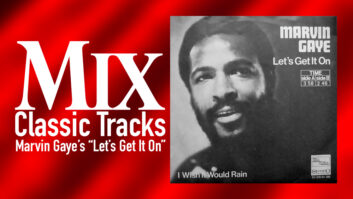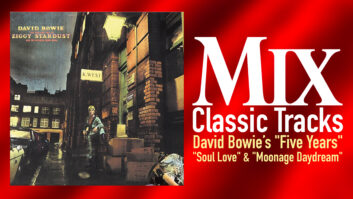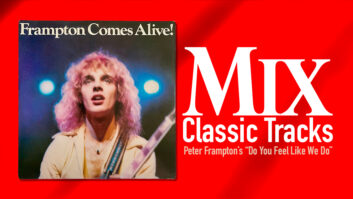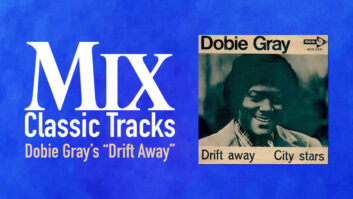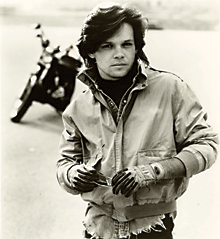
Early one summer morning in 1983, a 32-year-old John Mellencamp, dba John Cougar, drove himself home to Bloomington, Ind., from the Indianapolis airport. He had won an American Music Award for Favorite Pop Male that year, as well as his first and only Grammy Award — Best Rock Vocal Performance, Male for “Hurts So Good” from his multi-Platinum breakthrough album, American Fool. After seven years of playing to near-empty dive bars, dealing with shady managers and having his name changed behind his back, he had finally achieved quantifiable commercial success.
As he cruised along an overpass, he looked down and saw a black man sitting with a cat in his arms on the front porch of his weathered, pink shotgun shack. The Interstate ran within feet of the man’s front yard, but he didn’t seem disturbed by the commotion around him. “He waved, and I waved back,” Mellencamp told Rolling Stone. “That’s how [“Pink Houses”] started.”
Mellencamp, still learning the craft of songwriting and arranging, sat down with a tape machine and described the man, and didn’t stop recording until he had “Pink Houses” fully written. More song ideas came just as quickly. Propelled by this creative surge, he called up producer/engineer Don Gehman, who had worked on American Fool and the largely forgettable John Cougar album, to come and record his next album.
Mellencamp, guitarists Mike Wanchic and Larry Crane, drummer Kenny Aronoff and studio bassists Willie Weeks and Louis Johnson (standing in at various times for newcomer Toby Myers) headed to The Shack, an unfinished, rundown farmhouse between Brownstown and Seymour, Ind. Mellencamp’s sister, Laura, and her husband-to-be owned the house and the hog farm it sat on, but ran out of money before they could finish renovating their home. Mellencamp agreed to lend them the money on one condition: that he could first use the space as a recording studio. The John Cougar-produced Never Kick a Sleeping Dog album by Mitch Ryder served as a test run for The Shack to see if recording on native soil would work better for the devoted Midwesterner, who felt too crazy and distracted in fast-paced L.A. and wanted to be close to his friends and family.
With the help of Criteria Recording’s chief engineer, Ross Alexander, and staff engineer Greg Edward, Gehman gutted the Miami studio’s mobile unit and moved its equipment — an MCI console, 16-track tape machine and a few other items — into The Shack’s kitchen, which became the control room. They blew a hole in the wall so that they could see into the living room, now the live room, put up a little bit of drywall to create a drum room and iso booth, and away they went.
“Since it was being taken apart after recording, there was no need to make it pretty, and it wasn’t,” recalls Grammy-winning engineer David Thoener, a 29-year-old New Yorker at the time, who was called in to engineer and mix alongside Gehman. “The air-conditioning ducts were hanging out of the ceilings; it was quite a sight. But it had an amazing sound.”
“The control room was so small you literally couldn’t turn around,” adds Wanchic. “You had to just pick your spot and plant!”
By recording in this underdeveloped home studio (a precursor to Mellencamp’s professionally built Belmont Mall recording facility, also near Bloomington) in rural Indiana, the group could isolate themselves from society, but not from the animals in the back yard. “The smell was unbelievable!” recalls Wanchic. Thoener remembers eating lunch outdoors while the pigs milled around and breaking for dinner at a nearby greasy spoon.
“Pink Houses,” thank goodness, featured the inner ambience of The Shack. “There is no reverb on the drums; that sound is only the living room,” says Thoener. “John’s tracking vocal was recorded in the same room. We used gobos with Plexiglas windows, put John in a corner of the room and made a triangle. He stood there looking at Kenny and the entire band. Everyone was in the same room. The backing vocals were an overdub, but recorded in the same room, so the ambience on those vocals is also the living room.” One instrument bled into another in the ramshackle recording environment, giving Mellencamp the raw, Rolling Stones-influenced sound he wanted.
Mellencamp sang with the band in his isolated corner, probably into a Telefunken or a Neumann, as Thoener recalls. The engineer set up Aronoff’s drums in the opposite corner, and Wanchic and the bassist on opposite sides facing the kitchen/control room. Crane stayed in the control room, but his amp was miked in the bathroom. Wanchic’s amp and the bass amp also went into separate isolated rooms elsewhere in the house.
Working from 10 a.m. to midnight, they recorded “Pink Houses” in one day and finished the entire album in 16. “Sometimes it just falls together, and sometimes you beat your head against the wall for a week and you end up with babble,” says Wanchic. “We were smart enough, or at least we thought so, to know the difference.”
“Think fast, make mistakes,” was the credo for this album, which was a radical departure from the labor-intensive American Fool. “We just decided to go out there and make the rawest, most natural-sounding, off-the-cuff, first-impression record that we could come up with, and we did it very spontaneously,” says Wanchic. “First ideas were exploited heavily, and it was done with great vigor and aggression.”
“Don’t let me go back and touch any of these songs, even if I want to,” Mellencamp would tell Gehman and the band.
Gehman kept many of the original lead vocal takes, with Mellencamp going back later only to fix a line or two. “He is meticulous, but you can’t deny a great performance,” says Thoener. “If you’re lucky to get it on the live take, you’d be a fool to not recognize it and keep it. He’s always after his best performance and not one for punching in syllables.”
As with the previous Mellencamp/Gehman collaborations, Gehman’s presence was integral to the success of this off-kilter recording session. Aside from being an excellent engineer, he also had a calming influence over the hotheaded young artist. He wasn’t intimidated by his client’s demanding nature; he served as a sounding board for Mellencamp’s ideas and kept him from going too far over the edge.
But Mellencamp also pushed him and his band by taking them to unfamiliar and unconventional territory. For Uh-Huh, Mellencamp wanted to call forth a sound that wasn’t just aggressive-sounding, but was irritating and aggravating, the very opposite of the clean and more pleasant sound of his earlier records. Recording in a half-finished house with wires covering the floor and minimal equipment was one way to instill some of the tension that would lead to this rough-and-tumble sound. “Because of my background in live sound, I was accustomed to moving equipment in and out, wiring things up and making them work,” says Gehman, who got his start as a sound engineer for Clair Bros. “Getting used to what an environment does to you acoustically and making judgments [in that environment], I knew nothing about. I’m out in the boonies, with gear that I’d rented in some acoustic space where I really couldn’t hear anything, and then he wanted me to create something that I had never done before. Everybody was pushed to this place where they’re teetering.”
Recording the Ryder album helped Gehman and his tech staff work out some of the kinks with The Shack before beginning Uh-Huh, which is one of the reasons the sessions went relatively smoothly and quickly. After 16 days at the hog farm, Gehman and Thoener mixed the album at Cherokee Studios in L.A., the same studio where Mellencamp had recorded Nothin’ Matters and What If It Did and parts of American Fool. PolyGram then turned over Uh-Huh to Bob Ludwig for mastering and released the album in late 1983. A photo of The Shack appears on the back cover, while the front introduces the artist’s real surname — Mellencamp — to the record-buying public for the first time.
The album shipped Gold and was certified Platinum five weeks after its release. “Pink Houses,” its second single, reached Number 8 on Billboard‘s pop singles charts, and ultimately became an American anthem for the working class. Even though the song’s underlying message says, “the American dream ain’t all it’s cracked up to be,” its catchy chorus got the attention of then-President Ronald Reagan, who wanted to use the song for his 1984 re-election campaign. Mellencamp, a life-long liberal, refused.
The artist known authentically as John Mellencamp since 1991 admits that despite the song’s ubiquitous nature in the U.S. of A., he still cringes a bit whenever he listens to the words. “When I hear ‘Pink Houses’ — on the radio and when I sing it — I think, ‘Damn, I should have taken 10 more minutes on that ending,’” he said in an interview with the Washington Post. “I don’t like the lyric ‘And the simple man pays for the bills, the thrills, the pills that kill.’ The song was so on the money until that last verse.”
Born in a Small Town: The John Mellencamp Story by Mix contributing editor Heather Johnson will be published by Omnibus Press in November 2007.


